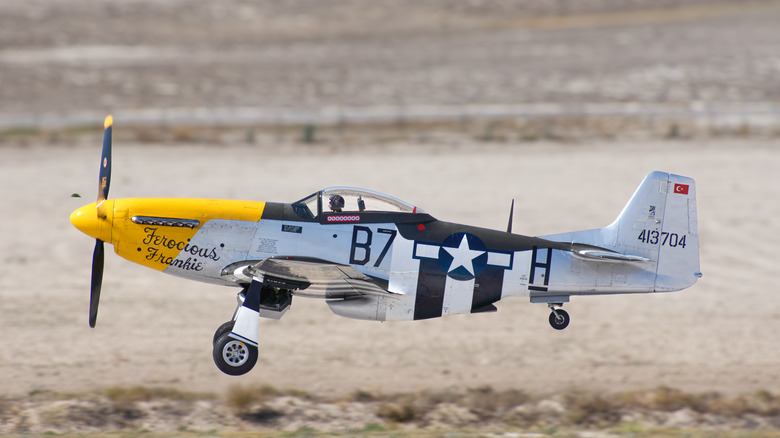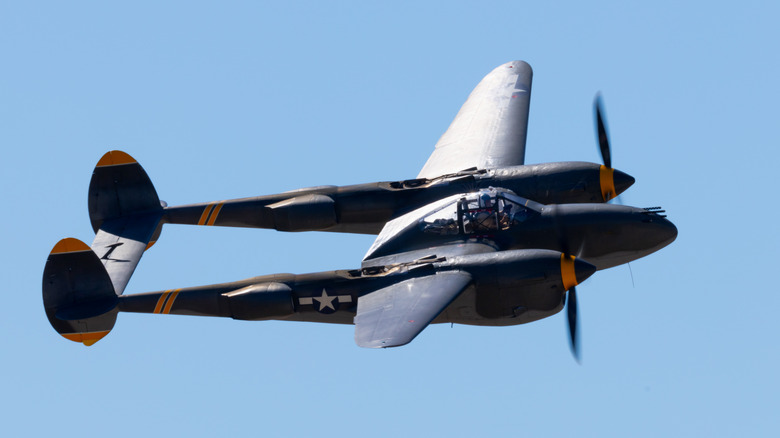Why Did Some World War 2 Fighter Planes Start With The Letter P?
Fighter aircraft of World War II left a legacy that has impacted modern military planning and aerial warfare. Despite rudimentary technology by today's standards, World War II fighters were remarkable machines that showcased significant advancements in aviation technology, outstanding performance, including the legendary Supermarine Spitfire, the Hawker Hurricane, and the Messerschmitt Bf 109. Among the aircraft of the era, the American fighter planes were given a distinctive naming designation by including the letter "P" in their model names, which meant pursuit.
The first aircraft to have a P designation was the Curtiss P-1 Hawk, a 1925 fighter biplane, but its use was expanded in World War II. During this time, the U.S. Army Air Service created its version of the World War I French plane classification "Avion de Chasse" or "Chasseur", which meant "hunt aircraft". It used "P" for pursuit in the naming convention for its fighters. While the term pursuit aircraft connotes a specific role, it served a variety of purposes, including fighter, interceptor, air dominance, bomber, and long-range escort. Aircraft that received the pursuit classification include the P-38 Lightning, the P-47 Thunderbolt, and the renowned North American P-51 Mustang.
Interestingly, during the same time, the United States Navy, which had its own designation system, used the letter "F". The reason for this was based on the Naval Aircraft Designation Systems that were used from 1922 to 1962, which included the aircraft manufacturer's name and the aircraft type, such as bomber, scout, trainer, or fighter. An example of a U.S. Navy aircraft using this naming convention is the Grumman F6F Hellcat, where the first letter "F" denotes fighter, while the "6" was the design order, and the second "F" stood for the manufacturer code.
Fighter and Pursuit roles
Alongside the "P" designation, the U.S. Army Air Service also had other designations they used, such as "B" for bombers like the B-17 Flying Fortress, "T" that denoted training aircraft like the North American T-6 Texan, and "A" that meant attack, which was used for the A-36A, which was an earlier variant of the famed P-36. The "F" designation was also used during this time, but it meant "Foto", or photo, and was given to reconnaissance aircraft like the Lockheed F-5, which was a specialized version of the P-38, made for observation, and had its weaponry removed and replaced with sets of cameras.
The United States Army Air Forces was reorganized after the war, and by 1947, a new service branch, the United States Air Force, was created. By the following year, in June of 1948, the new Air Force changed the naming conventions for its aircraft, including replacing the "P" previously used for fighters with the "F," such as in the case of the P-51, which was rechristened as the F-51. Another change to aircraft naming convention was made in 1962, when the U.S. Department of Defense implemented the Tri-Service aircraft designation system, which replaced the previous one that had been in place since 1948 and standardized aircraft naming conventions for all American Military services.
Today, the incredible modern fighter jets of the United States all use the "F" classification, based on the Mission Designation Series. An example of this is the F/A-18 Hornet, where the "F" signifies fighter, the "/" denoting additional functionality of the aircraft, like "A" for attack, while the number 18 is its sequence in its series design. From World War I to today, naming conventions remain important in the identification, organization, and communication of all aircraft.

